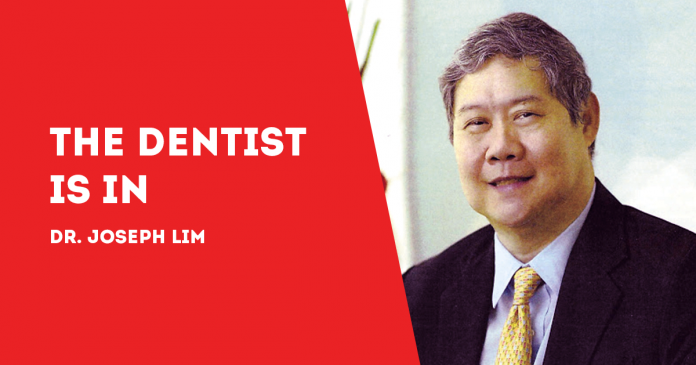
(By Dr. Joseph D. Lim and Dr. Kenneth Lester Lim, BS-MMG, DDM, MSc-OI)
SEVERAL diagnostic tools to detect the COVID virus have recently been developed – and dentists are very much part of the research team.
Scientists at the National Institutes of Health (NIH) have developed a reliable and faster way to detect the SARS-Cov-2 virus behind the pandemic.
It is a significant development since the pandemic has caused supply shortages for diagnostic tests.
Researchers describe the method as a safe, economic, and sensitive test for RNA.
The method bypasses extraction of the genetic RNA material of the virus, simplifying sample purification and potentially reducing the time and cost to do the test.
The method is the result of collaboration among researchers at the National Eye Institute, the National Institute of Health’s Clinical Center, and the National Institute of Dental and Craniofacial Research.
Diagnostic testing remains a crucial tool in the fight against the pandemic. Standard tests for detection of SARS-CoV-2 now involve amplifying viral RNA to detectable levels using a technique called quantitative reverse transcription PCR (RT-qPCR).
The RNA must first be extracted from the sample. Manufacturers of RNA extraction kits have had difficulty keeping up with demand during the COVID-19 pandemic, hindering testing capacity worldwide.
With new COVID variants emerging, the need for better, faster tests is greater than ever.
The research team for the new COVID test was led by Dr. Robert B. Hufnagel and Dr. Bin Guan, Ph.D.
Dr. Hufnagel is the Chief of the National Eye Institute’s Medical Genetics and Ophthalmic Genomic Unit where Dr. Guan is a research fellow.
Dr. Hufnagel and Dr. Guan are also connected with the Ophthalmic Genetics and Visual Function Branch, National Eye Institute, U.S. National Institutes of Health.
The co-researchers are Dr. Karen Frank of the Department of Laboratory Medicine, Clinical Center, Bethesda; Jose´ O. Maldonado of the Biology Section, U.S. National Institute of Dental and Craniofacial Research and colleagues Margaret Beach, Eileen Pelayo and Dr. Blake M. Warner of the Institute’s Salivary Disorders Unit.
The study used a resin from a chelating agent (a chemical compound that binds tightly to metal ions) to preserve SARS-CoV-2 RNA in samples for detection by RT-qPCR.
“We used nasopharyngeal and saliva samples with various virion concentrations to evaluate whether they could be used for direct RNA detection,” says Dr. Guan. (A virion is an entire virus particle.)
“The answer was yes, with markedly high sensitivity,” says Dr. Guan, the lead author of a report on the new detection technique published in iScience. “This preparation inactivated the virus, making it safer for lab personnel to handle positive samples.”
Dr. Hufnagel’s team made their discovery by testing a variety of chemicals using synthetic and human samples to identify those that could preserve the RNA in samples with minimal degradation while allowing direct detection of the virus by RT-qPCR.
To validate the test, Dr. Warner, a dentist, collected sample from patients.
Using conventional RNA extraction and RT-qPCR testing, the samples were tested by the COVID-19 testing team led by Dr. Frank.
The samples were heated and the viral RNA then tested by RT-qPCR. The new preparation significantly increased the RNA yield available for testing, compared to the standard method.
“We think this novel methodology has clear benefits of increasing sensitivity, cost and time savings for testing,” says Dr. Hufnagel, “The method stabilizes the RNA at room temperature for easier transport, storage, and handling in clinical settings.”
***
Dr. Joseph D. Lim is the former Associate Dean of the College of Dentistry, University of the East; former Dean, College of Dentistry, National University; Past President and Honorary Fellow of the Asian Oral Implant Academy; Honorary Fellow of the Japan College of Oral Implantologists; and Honorary Life Member of the Thai Association of Dental Implantology. For questions on dental health, e-mail jdlim2008@gmail.com or text 0917-8591515./PN

